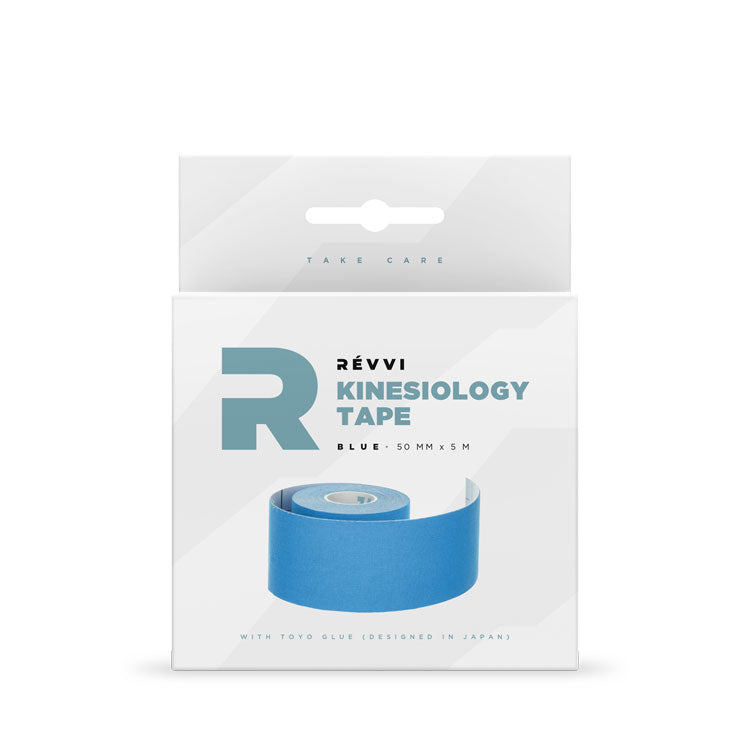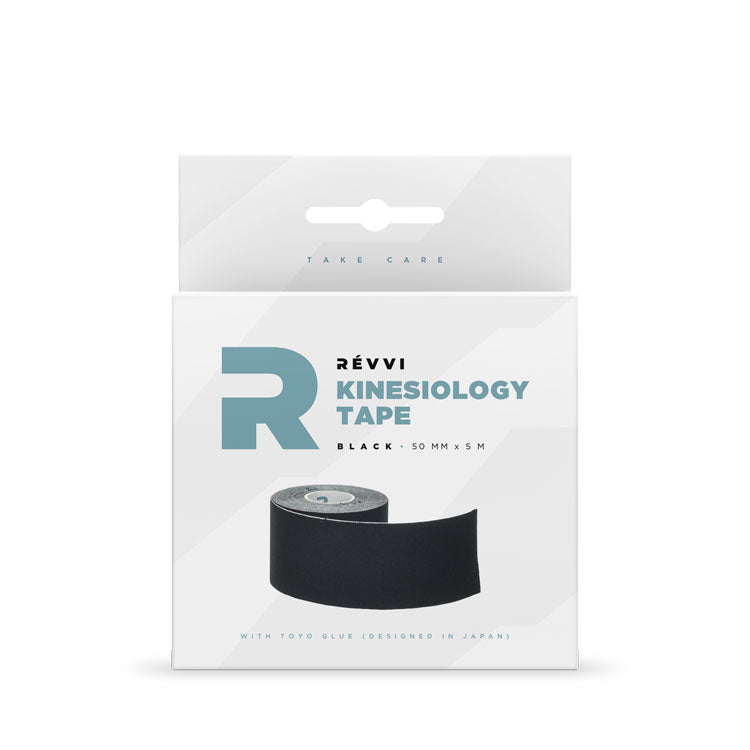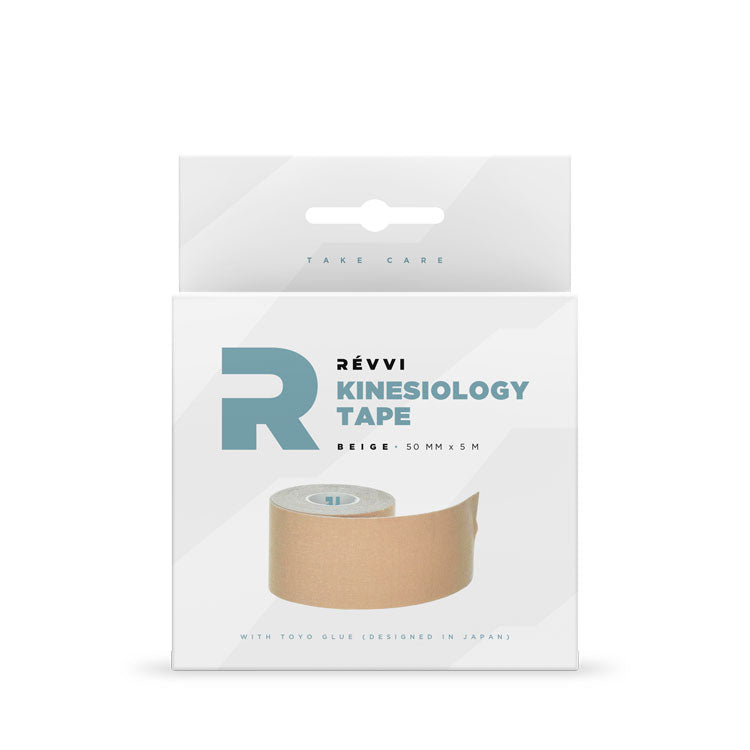KINESIO TAPE
In essence, kinesiology taping can be seen as a way of constant massage!
It supports the microcirculation (transport of nutrients through capillaries), stimulates lymphatic drainage, prevents the adhesion of connective tissue and improves the mobility of muscles and joints.
Unlike traditional rigid sports tapes - which firmly immobilizes to prevent further injury - kinesio tape will direct and encourage the muscles and fascia (connective tissue) to move! Kinesio tape is almost identical to the human skin in terms of thickness and elasticity. Therefore, kinesiology tape can be used without it restricting the freedom of moving.
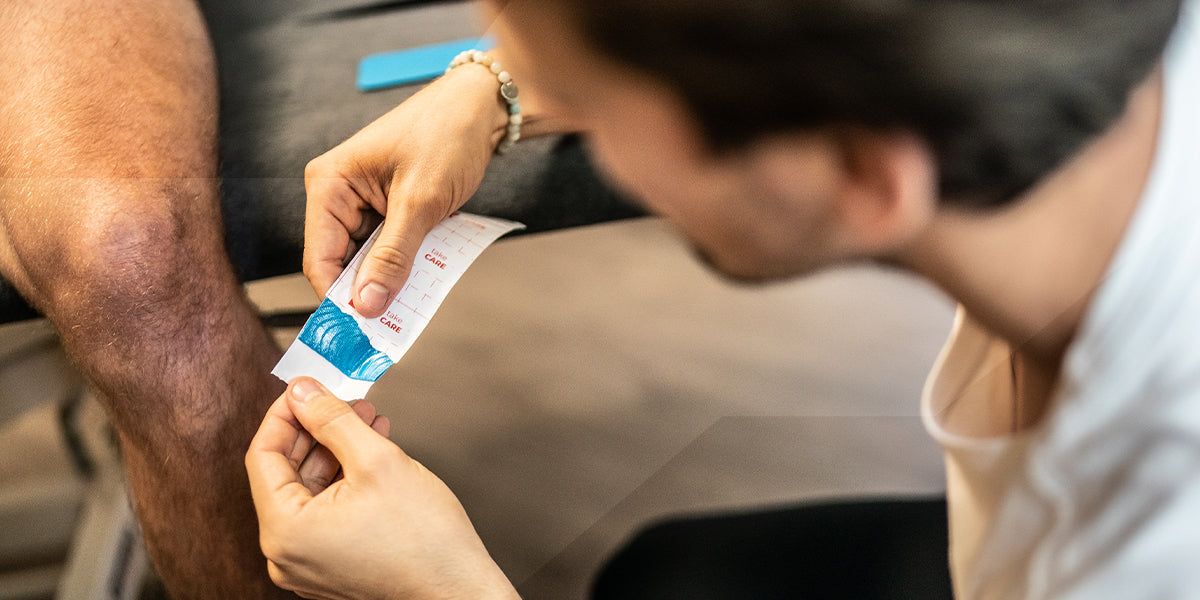
HOW DOES IT WORK
Nerve receptors are located both in the skin and in the deep(er) layers of ao. the fascia and muscles. The combination of a correct tension with which the tape is applied and the wave pattern on the inside of high-quality kinesiology tape "lifts" the skin and loosens it from the underlying muscle tissue. A relief or decrease in pressure on the injured muscle takes place, causing the nerve receptors to send a reduced number of pain signals to the brain.
TAPE TENSION
Tensions can activate and excite muscles; therefore the elasticity and tension of the tape are paramount:
• When recovering from an ACL injury, the quadriceps muscle is significantly weakened. When "kinesiotaped" with maximum tension, the muscle fibers will be brought closer together, essentially causing a permanent contraction of the muscle (and therefore the muscle will strengthen).
• On the other hand, with plantar fasciitis (inflammation in the heel area), the calf will experience a high pressure. This pressure can be reduced by applying the kinesio tape with (very) limited tension in order to decrease the reception of pain signals.
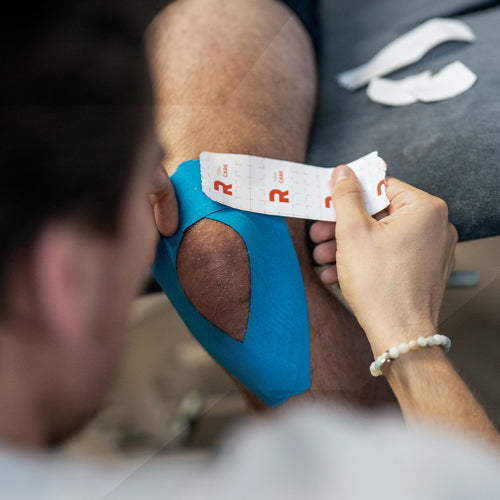
DOES IT HELP?
YES!
Studies have shown that using kinesiology tape for chronic musculoskeletal pains - lasting longer than XNXUX weeks (1) - has a better outcome compared to other typical interventions such as ice, painkillers, etc.).
As with any treatment, taping does not apply to everyone and is part of a broader treatment plan. Kinesiology tape should be seen as an addition to other “evidence-based” treatments such as therapeutic exercises.
WHEN TO USE
Depending on how the kinesiology tape (level of tension) is applied, it can be used for ao. supporting muscles, proprioception (muscle stability during mobility) and relieving the fascia:
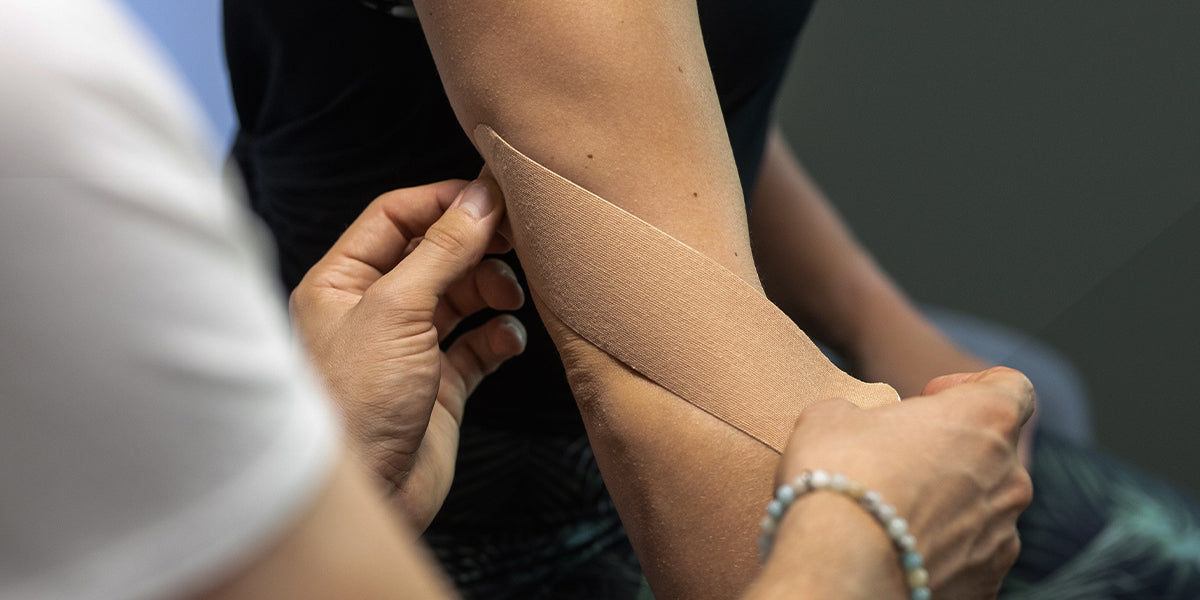
SUPPORT
Taping prevents muscles from stretching or contracting too much. Kinesiology tape is used to provide additional support to the affected muscles or joints without restricting the mobility.
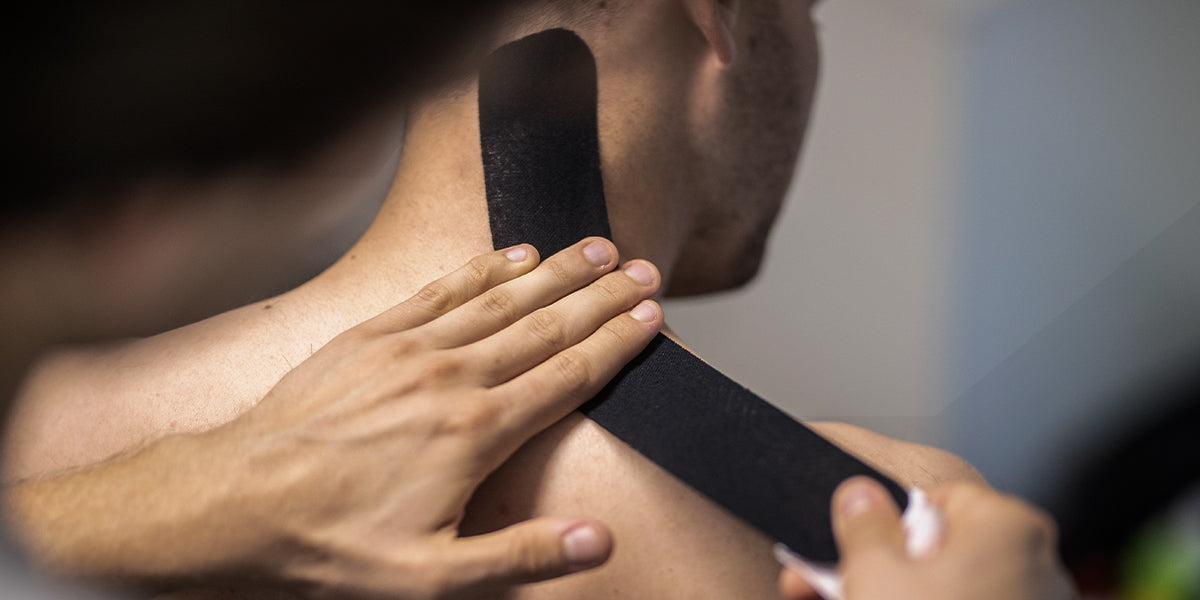
RE-EDUCATION
Kinesiology tape can help "re-educate" muscles that have become accustomed to incorrect positioning, making they do not function at all or have lost (largely) their function.
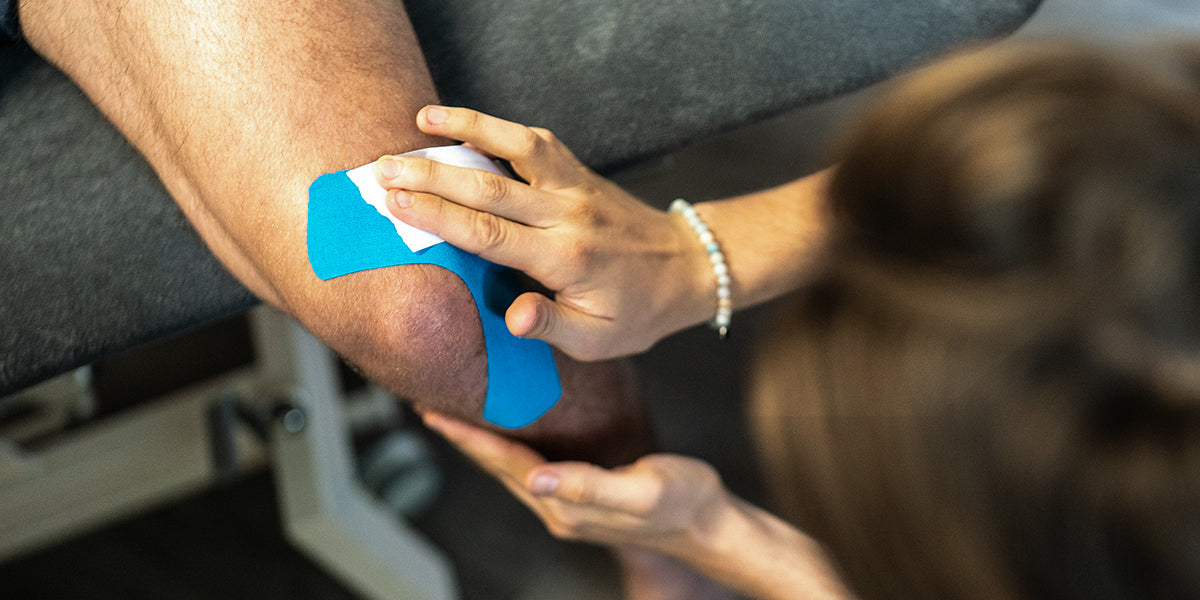
IMPROVE
Some use kinesiology tape because they believe it can help improve performance. However, there are no medically substantiated studies and it is thought to be more of a psychological aspect.
HOW TO APPLY
You don't have to be a specialist to apply kinesiology tape correctly. There is no proof whatsoever that all kinds of patterns and specific techniques contribute to a better result! Apply the tape to the painful area with a slight stretch (approx. 25% but never more than 50%). If the tape does not reduce pain by 50% after application, the kinesio tape will not be effective for this specific situation.
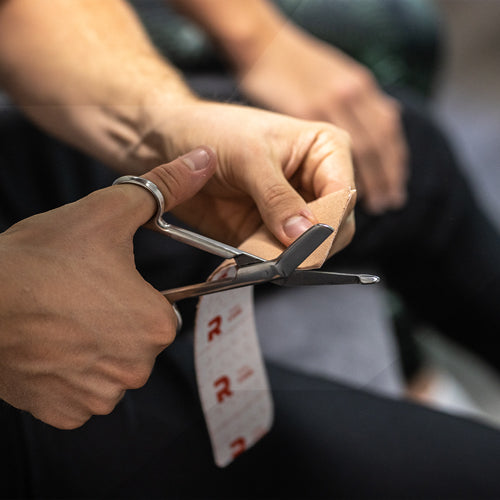
APPLICATION TIPS
The first and last 4 cm of the tape should be applied without any tension.
• Avoid wrinkles in the tape and do not touch the adhesive side with your hands.
• Cut the ends into a round shape to prevent the angled sides from coming off more quickly.
• Apply to the painful area and place multiple strips along both sides of the affected muscle if necessary.
• Remove immediately if there is a rash (allergic reaction).
• Kinesio tape can be worn in between 3 and 5 days.
• Contact with water has an influence on the wearing time (adhesion).
SOURCES
(1) Lim, EC and MGTay, Kinesio taping in musculoskeletal pain and disability that lasts formore than 4 weeks: is it time to peel off the tape and throw it out with the sweat?A systematic review with meta-analysis focused on pain and also methods of tapeapplication.Br J Sports Med, 2015. 49(24): p. 1558-66.
> VIEW THE SOURCE


